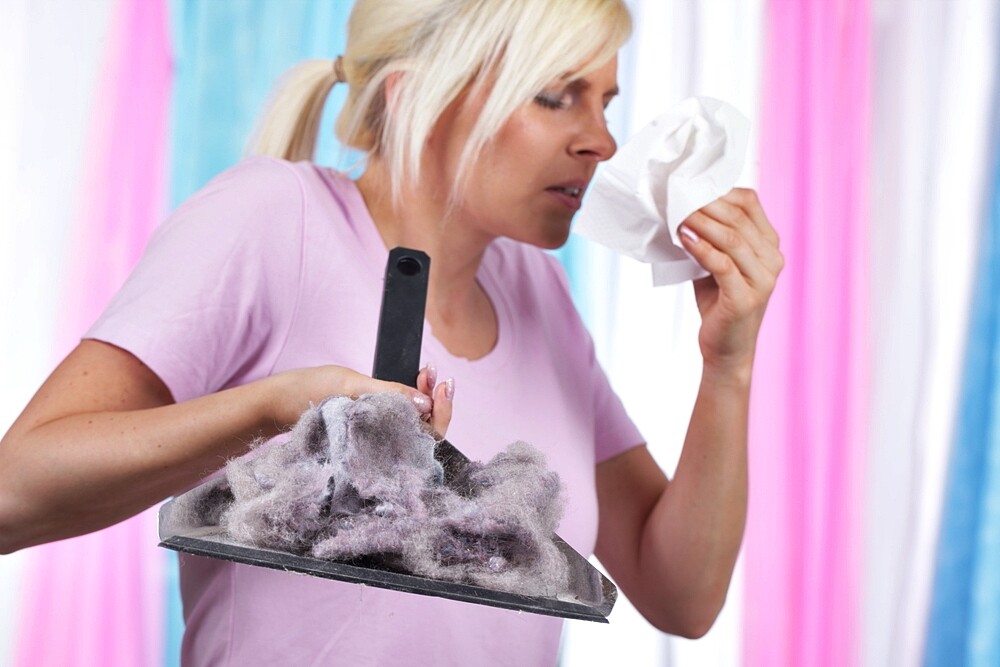A house dust allergy often makes life difficult for those affected. We explain what causes the allergy, what symptoms there are and what helps.
What is a house dust allergy?
In the case of a house dust allergy (actually: dust mite allergy) affected people react allergic to mite excrement. The microscopically tiny animals are usually present in house dust. The symptoms of the allergy (e.g. coughing and sneezing irritation) are similar to those of hay fever, a cold or a detergent allergy. Medication can alleviate the symptoms, but in the long term the house dust allergy can best be treated by hyposensitization. It also helps to reduce house dust as much as possible.
About ten percent of all Germans have an allergic reaction to the excrement of house dust mites. The house dust allergy is therefore one of the most common allergies in Germany, alongside the classic pollen allergy. It can be determined by a prick test.
Am I only affected by a mite allergy because of bad hygiene?
Contrary to what one might initially think, mites are among the typical human “roommates”. The animals feed on dead skin scales and do not transmit diseases. However, it is almost impossible to avoid them completely in order to avoid allergic reactions.
The mites’ droppings dry out quickly and then break down into tiny particles, which in turn mix with the house dust. And this dust not only collects visibly on the floor, but also on cushions and blankets, for example. If these textiles are shaken, the dust is stirred up and thus gets into the air we breathe. Therefore it is helpful to reduce visible house dust as much as possible, but this does not usually relieve the symptoms.
Allergy sufferers: What are the symptoms of house dust mite allergy?
Since the symptoms of an allergy to house dust mites are similar to those of a cold, it is not easy to distinguish between the two diseases. The following complaints occur with house dust allergy:
- Nose blocked (runny nose often rather indicates hay fever)
- Irritation of the throat
- Sneezing
- Itchy and watery eyes
- Headaches
- Sore throat
- Skin reactions
- Respiratory distress (in severe cases)
At night and in the early morning the exposure to mites is usually highest – therefore a house dust allergy can also quickly lead to sleep disturbances. You can find even more allergy symptoms here.
Spray solution and etc.: How to treat a house dust allergy
There are two different ways to treat house dust allergy symptoms:
Short term treatment
The primary aim is to relieve the symptoms of mite allergy. Here, the doctor can prescribe medication with so-called histamines, which are generally used for allergies. A nasal spray and eye drops from the pharmacy can also help, for example.
Long term treatment
Hyposensitization is particularly suitable for long-term treatment. It requires a lot of patience, but it is worth it: the treatment minimizes the symptoms. Hyposensitization also helps with other allergies such as hay fever or an insect venom allergy.
Tips: What else can I do against dust mites?
Even if it is not possible to banish the house dust mite completely from the home, there are a few tips to reduce the burden:
- Wash bed linen often: best every two weeks at 60 degrees
- Buy encasings: these coatings are impermeable to mites and are even covered by some health insurance companies in case of allergic reactions
- Do not keep pets: if you cannot do without them, you should not let them into the bedroom
- Clean the dust catcher regularly: Wipe smooth floors with a damp cloth every two days and vacuum regularly
- Put pillows, soft toys and other textiles in the freezer for 24 hours
- Use mite spray on textiles – these contain substances that make the food inedible for mites, which eventually kill them
- Ventilate thoroughly: At least three times a day for five minutes each time thoroughly

